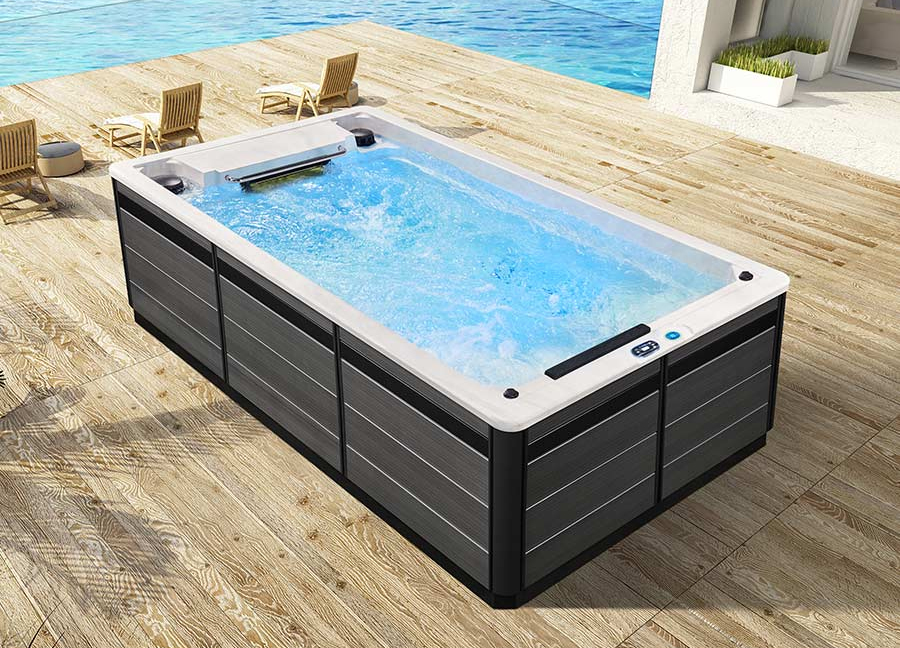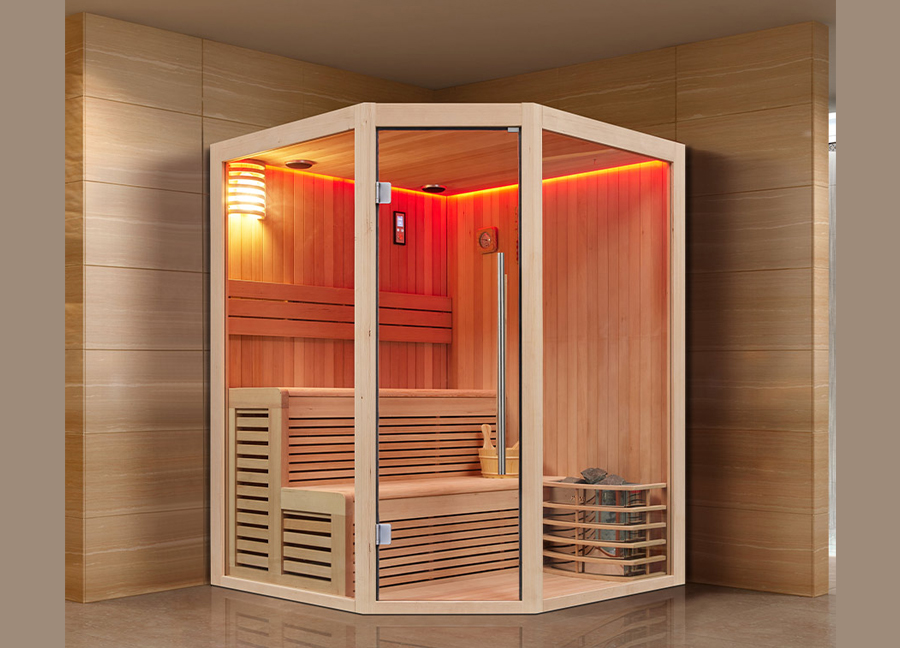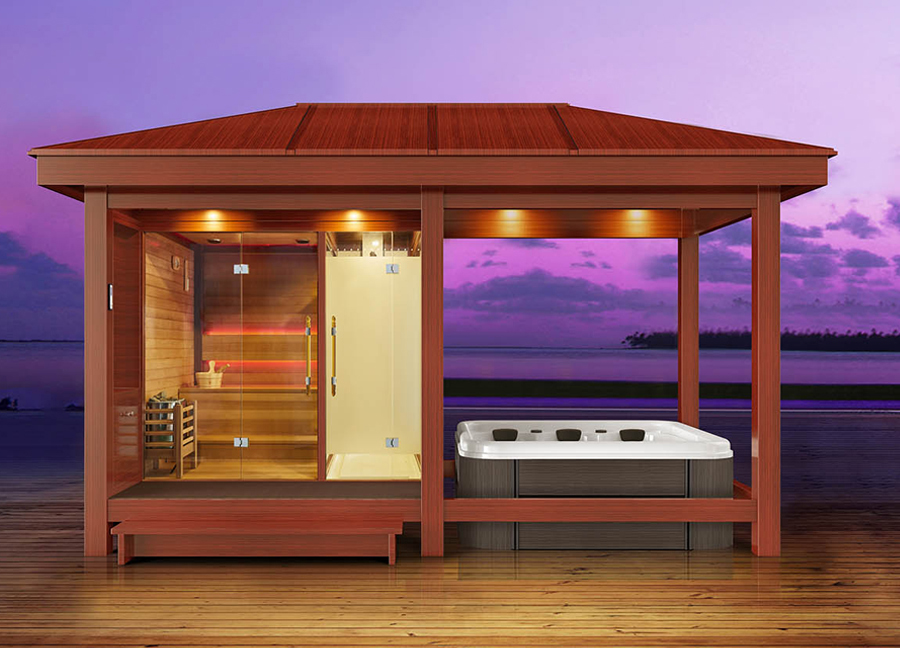For many spa equipment users, maintaining stable and clean water in their jacuzzi massage bathtub is an ongoing maintenance task. Adding chemicals (such as chlorine, bromine, pH adjusters, or scale inhibitors) is a routine step, but many people overlook a crucial principle—the basic parameters of the water must be balanced before any chemical treatment.
Ignoring this step can not only reduce the effectiveness of chemicals but also lead to problems such as skin irritation, equipment corrosion, or water turbidity.
This article will delve into: What parameters should be balanced first in a jacuzzi massage bathtub when adding chemicals? Why is water balance so critical? How can it be scientifically tested and adjusted?

Why should you balance the water before adding chemicals to a jacuzzi massage bathtub?
Many people believe that simply adding enough chlorine or bromine to the jacuzzi massage bathtub will keep the water clean. However, the opposite is true. The effectiveness of chemicals is closely related to the chemical balance of the water.
1. Chemical Balance Determines Disinfectant Efficiency
If the pH value is too high, the effective bactericidal ability of chlorine will decrease drastically. For example, when the pH value rises from 7.2 to 8.0, the effectiveness of chlorine drops to below 20%.
This means that even if more chlorine is added, the ideal bactericidal effect cannot be achieved.
2. Imbalanced Water Can Damage Equipment and Skin
If the alkalinity is too high, scale will easily form in the heater, nozzles, and pipes inside the jacuzzi massage bathtub; if it is too low, it will cause corrosion of metal parts, discoloration of the inner wall, and dry or irritating skin.
3. Interactions Between Chemicals
Interactions can occur between different chemicals. For example, if chlorine or bromine is added directly to water with an unbalanced pH, they may react to produce irritating gases or precipitates, thereby weakening the effect or even damaging the equipment.
Conclusion: The correct order is—balance the water quality first, then add chemicals. Only when the basic parameters of the water are within the ideal range can all additives perform optimally.
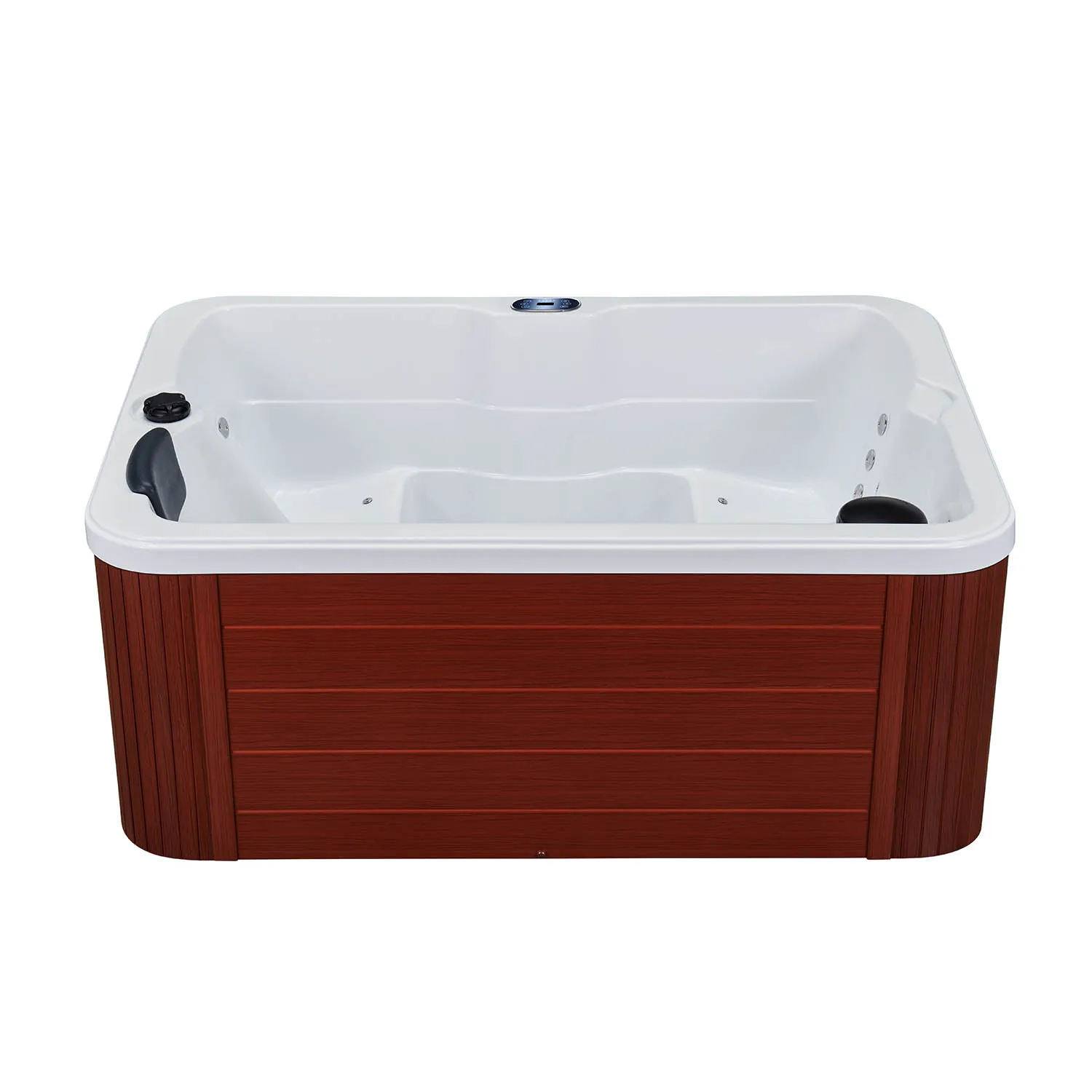
What key parameters should be balanced first in a jacuzzi massage bathtub?
Before adding any chemicals, focus on three core water quality indicators:
1. Total Alkalinity (TA) – The First Step to Balancing
Total alkalinity measures water's buffering capacity against pH changes; it can also be understood as the "foundation of water quality stability."
If alkalinity is too low, pH will fluctuate frequently; if alkalinity is too high, pH adjustment will become difficult.
• Ideal Range: 80–120 ppm
• Problems with Low Alkalinity: Unstable pH, metal corrosion, cloudy water
• Problems with High Alkalinity: Scale buildup, difficulty in lowering pH, nozzle clogging
Adjustment Methods:
• If too low, add an alkalinity increaser, usually sodium bicarbonate (NaHCO₃);
• If too high, use an acid adjuster (such as dry acid or diluted hydrochloric acid) to lower it.
Suggested Operating Order:
Before any other chemical adjustments, always test and adjust the total alkalinity first.
2. pH Value (Acidity/Alkalinity Balance) – The Core of Balance
pH value determines the acidity or alkalinity of water, directly affecting human comfort, equipment lifespan, and disinfectant effectiveness.
• Ideal Range: 7.2–7.8
• pH < 7.0: Water is acidic, easily corroding metal parts and irritating skin and eyes.
• pH > 8.0: Water is alkaline, leading to scaling, turbidity, and disinfectant ineffectiveness.
Adjustment Methods:
• If too low: Use a pH up agent, usually sodium carbonate;
• If too high: Use a pH down agent, often sodium bisulfite or dry acid.
Key Principle:
Adjust the pH only after the total alkalinity has stabilized. Alkalinity is the "foundation," pH is the "walls."
3. Calcium Hardness (CH) – Key to Preventing Corrosion and Scale
Calcium hardness reflects the concentration of calcium ions in water, directly affecting scale and corrosion in heaters, nozzles, and internal walls.
• Ideal Range: 150–250 ppm
• Too Low: Water will "dissolve" metals and coatings, leading to equipment corrosion;
• Too High: Forms white scale, sediment, and nozzle blockage.
Adjustment Methods:
• Too Low: Use a Calcium Increaser;
• Too High: Partially change the water or dilute with soft water.
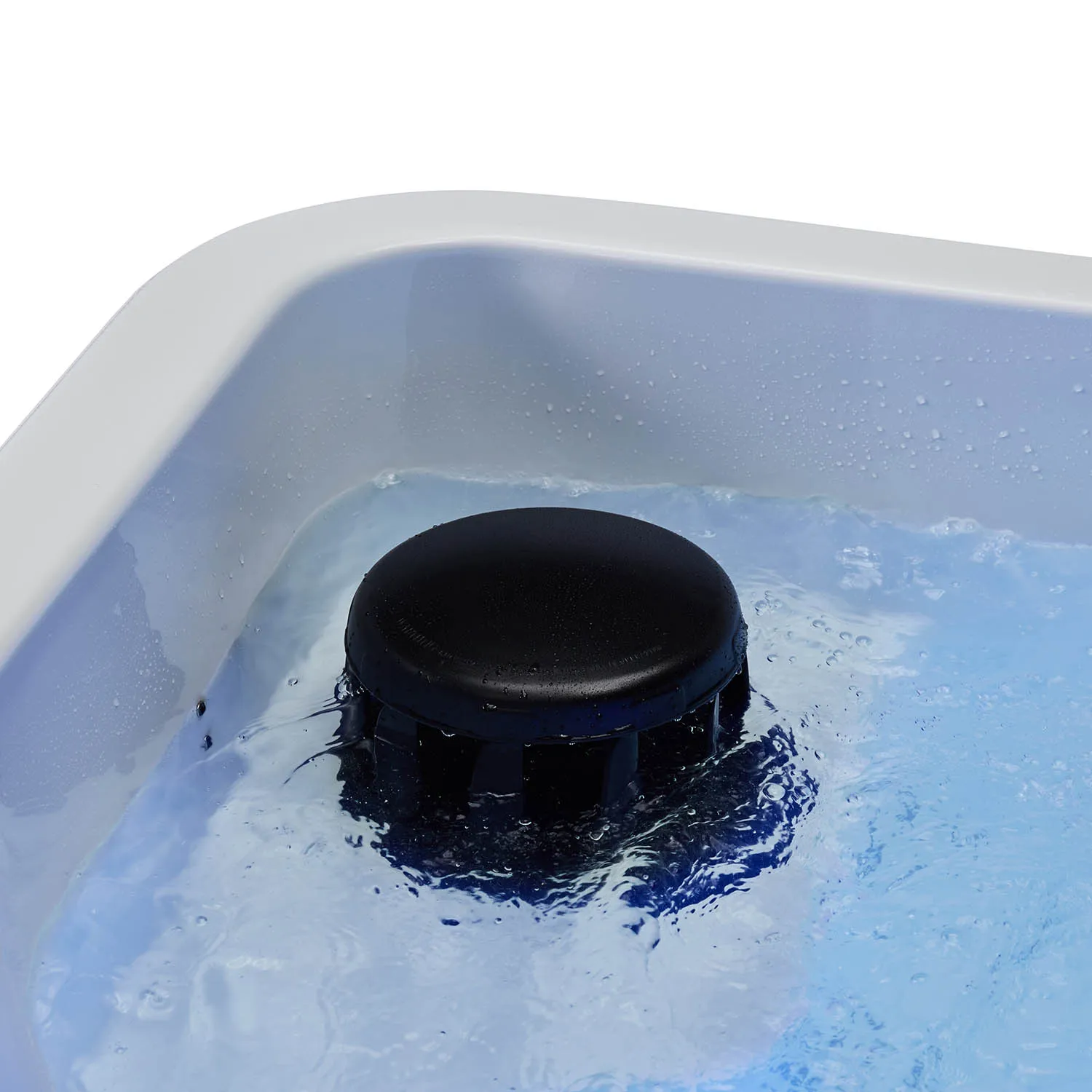
What is the Best Order for Testing Water Quality in a Jacuzzi Massage Bathtub?
In the maintenance of a Jacuzzi massage bathtub, the order of testing is just as important as the order of adjustment. A correct testing procedure can avoid repetitive operations and chemical interference.
Recommended Testing Order:
1). Test Total Alkalinity (TA)
As a "buffer layer" for water quality, it should first be determined whether it is within the ideal range.
2). Test pH value
If alkalinity is stable, test and adjust the pH to ensure acid-base balance.
3). Test calcium hardness (CH)
Ensure the equipment is not damaged by soft or hard water.
4). Finally, test disinfectant concentration (chlorine or bromine)
Ensure the first three items are balanced before adding disinfectant; otherwise, its effectiveness will be affected.
What are the ideal chemical parameters for a jacuzzi massage bathtub?
Parameter Name | Ideal range | Adjustment tools or chemicals | Impact Description |
| Total Alkalinity (TA) | 80–120 ppm | Sodium bicarbonate / dry acid | Stabilizes pH, preventing fluctuations |
| pH Value | 7.2–7.8 | pH up / pH down | Affects disinfectant efficiency |
| Calcium Hardness (CH) | 150–250 ppm | Hardness enhancer / water dilution | Prevents scaling and corrosion |
| Free Chlorine (FC) | 3–5 ppm | Chlorine tablets / chlorine powder | Sterilizes and removes algae |
| Total Bromine Content | 3–6 ppm | Bromine tablets | More stable at high temperatures |
Tip: After each addition of new water or chemicals, it is recommended to wait at least 30 minutes to 1 hour before retesting to ensure the parameters are fully mixed and stable.
Why must alkalinity be adjusted first instead of pH?
Many beginners add pH adjusters directly, resulting in more severe water quality fluctuations. This is because there is an interdependence between total alkalinity and pH.
• If pH is adjusted first and alkalinity is unstable, pH will fluctuate continuously;
• If alkalinity is adjusted first, pH will naturally stabilize.
Total alkalinity can be compared to the foundation of a building, and pH to its superstructure. If the foundation is loose, no amount of adjustment to the upper layers can maintain balance.
Scientific order summary:
• Adjust Total Alkalinity (TA)
• Adjust pH
• Adjust Calcium Hardness (CH)
• Add Disinfectant (Chlorine/Bromine)
Add auxiliary chemicals such as scale inhibitors and clarifiers according to water quality requirements.
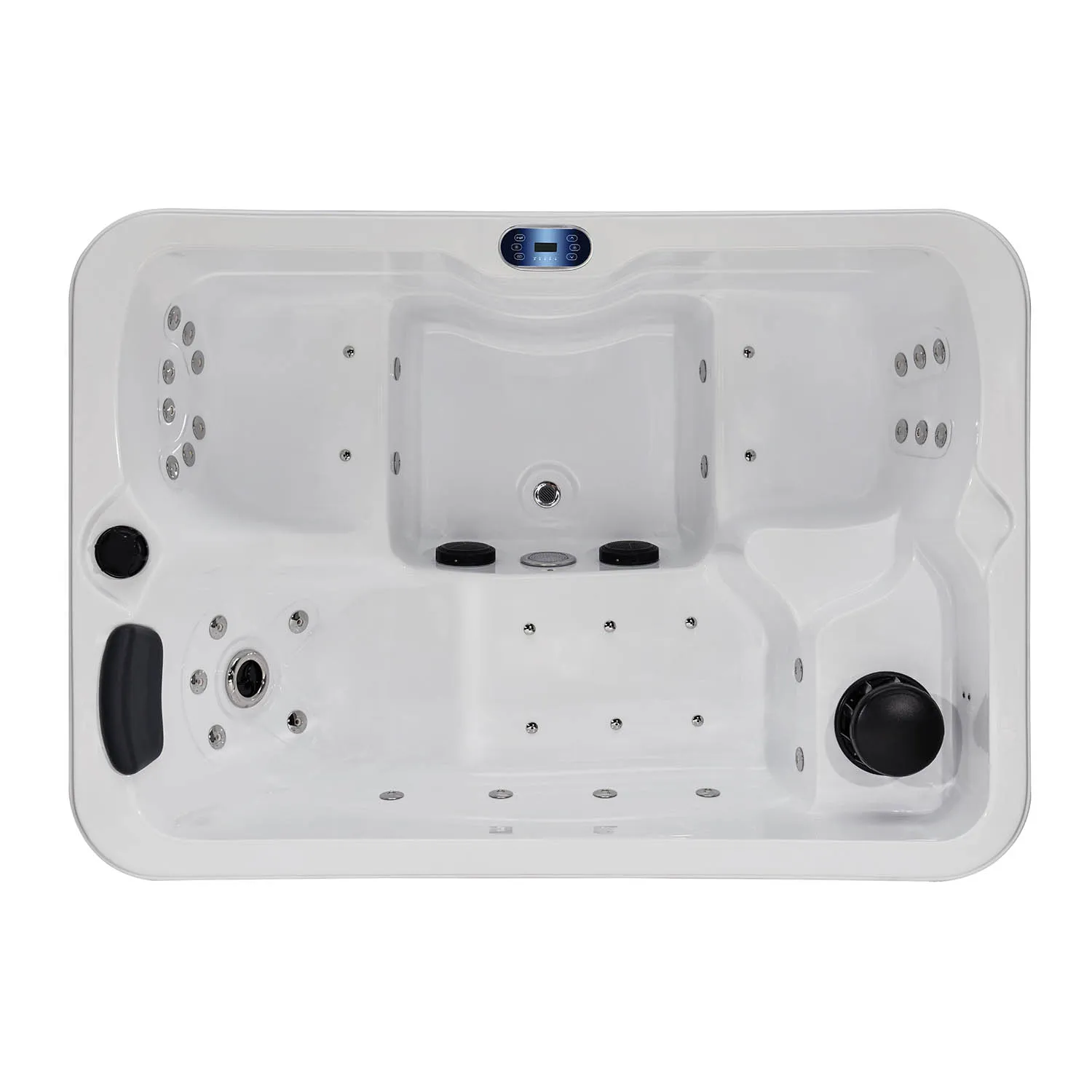
How to scientifically add chemicals to a jacuzzi massage bathtub?
The correct addition method can maximize efficiency and avoid reaction conflicts.
1. Add chemicals one by one in sequence; do not mix
Mixing different chemicals directly may cause chemical reactions or even produce harmful gases. Therefore, wait at least 30 minutes after adding one chemical before adding the next.
2. Keep the circulation system running
When adding chemicals, turn on the jacuzzi massage bathtub's circulation pump to ensure the agent is fully distributed and dissolved evenly, preventing excessively high local concentrations.
3. Pre-dissolve chemicals before pouring
For powdered or granular products (such as pH adjusters or hardness enhancers), dissolve them in warm water first and then slowly pour them into the bathtub. This prevents chemicals from settling at the bottom.
4. Waiting time after use
Depending on the type of chemical, wait as follows:
• pH/alkalinity adjusters: 30–60 minutes;
• Disinfectants (chlorine/bromine): at least 2 hours;
• Shock disinfectants: 8 hours before using the bathtub.
How to maintain the long-term chemical balance of a jacuzzi massage bathtub?
Maintaining long-term water quality stability requires not only one adjustment but also continuous monitoring and maintenance.
1. Regular testing and recording
• Use water quality test strips or an electronic tester to test at least 2–3 times per week;
• Maintain a record sheet to track trends for timely adjustments.
2. Keep the filtration system running efficiently
Clogged filters can lead to uneven chemical distribution, affecting test results and disinfection effectiveness.
Recommendations:
• Flush the filter weekly;
• Replace it every 3 months.
3. Prevent External Contamination
• Shower before bathing to reduce oil and cosmetic residue;
• Avoid using foaming agents or soap in the bathtub;
• Keep the lid clean to prevent dust and impurities from entering.
4. Regular Partial Water Changes
Over time, minerals and dissolved solids accumulate in the water, affecting clarity even if chemical indicators are normal.
It is recommended to completely change the water every 3 months.
How to Determine if the Jacuzzi Massage Bathtub Water is Truly Balanced?
To determine if the water is balanced, look beyond numerical values and consider the following physical characteristics:
• Clear and transparent water, without foam or turbidity;
• No irritating odor (e.g., excessive chlorine or sulfur smell);
• Smooth inner wall without scale buildup;
• Fine and even foam, indicating balanced minerals in the water;
• Stable test results for 2–3 days without fluctuation.
If you observe repeated fluctuations in water quality, it indicates that a certain parameter (usually alkalinity) is not truly balanced and requires retesting and adjustment.
The chemical balance of a jacuzzi massage bathtub follows a "scientific sequence."
To ensure optimal performance and safe use of your jacuzzi massage bathtub, it is essential to adhere to a scientific "water quality balancing sequence."
The correct operating procedure is summarized as follows:
• First, adjust the total alkalinity (TA)—establishing a stable pH foundation;
• Then, adjust the pH value—optimizing disinfectant activity and comfort;
• Adjust the calcium hardness (CH)—protecting the equipment from corrosion or scaling;
• Finally, add a disinfectant (chlorine or bromine)—maintaining water cleanliness and hygiene;
• Add auxiliary chemicals such as scale inhibitors and clarifiers as needed.
By strictly following this sequence and combining it with regular testing and maintenance, your jacuzzi massage bathtub will remain clear, balanced, and safe for a long time, providing a truly comfortable spa experience.
Do You Participate in International Trade Shows or Exhibitions?
Yes, we frequently showcase outdoor spas, sauna rooms, and swim spas at international exhibitions. This allows global buyers to experience our product quality firsthand. During these events, we often release promotions and discounts, making them ideal opportunities for partners to start purchasing or expanding their product lines. Attending trade shows helps us strengthen our brand presence worldwide.

